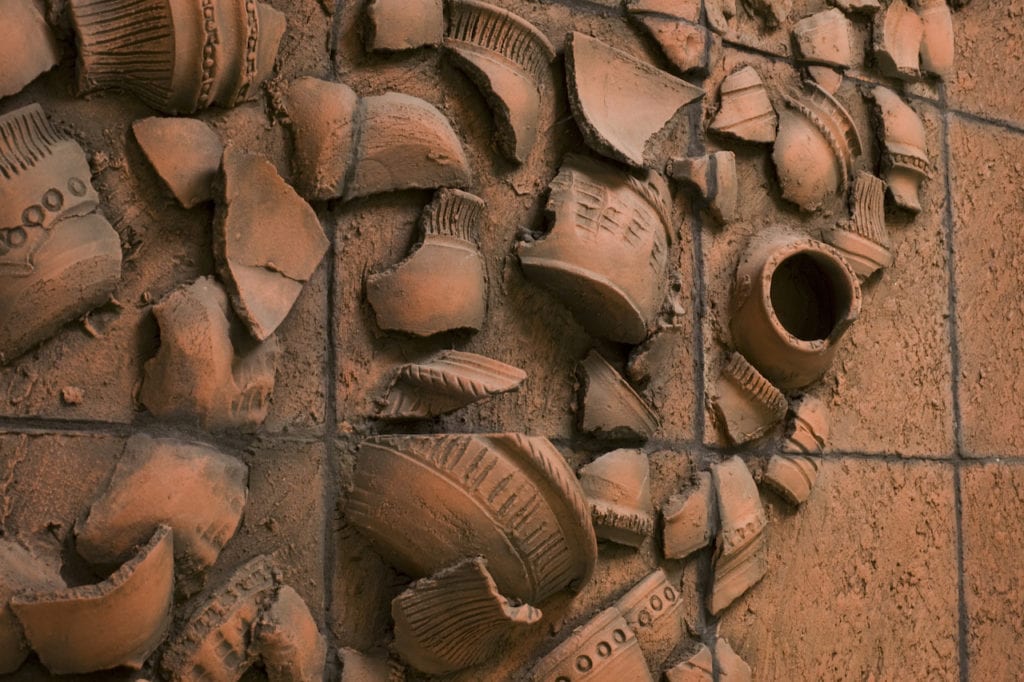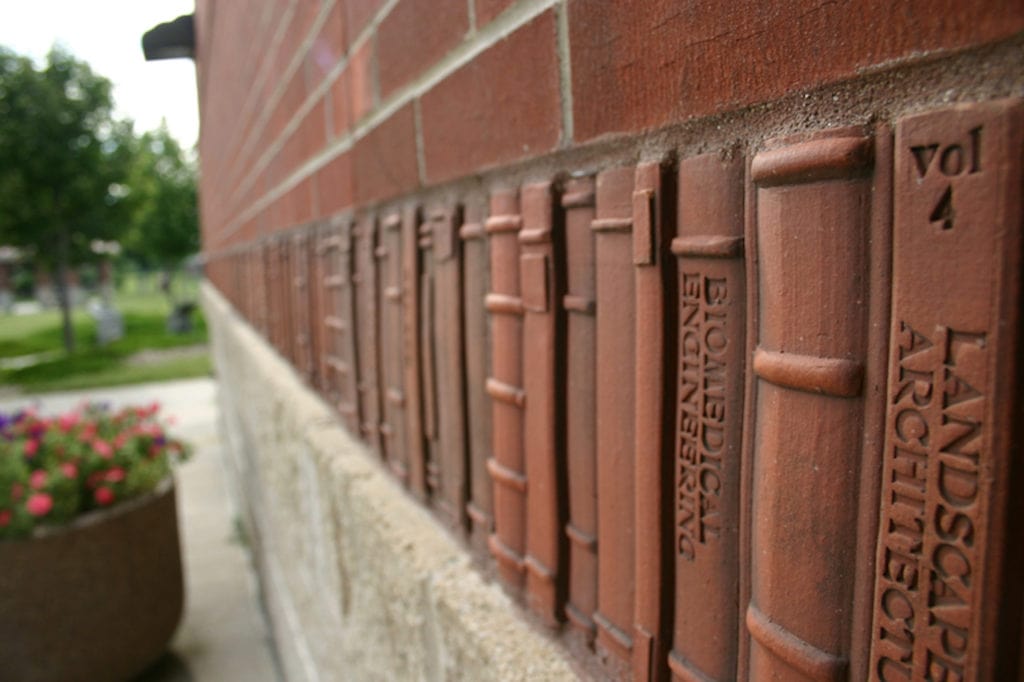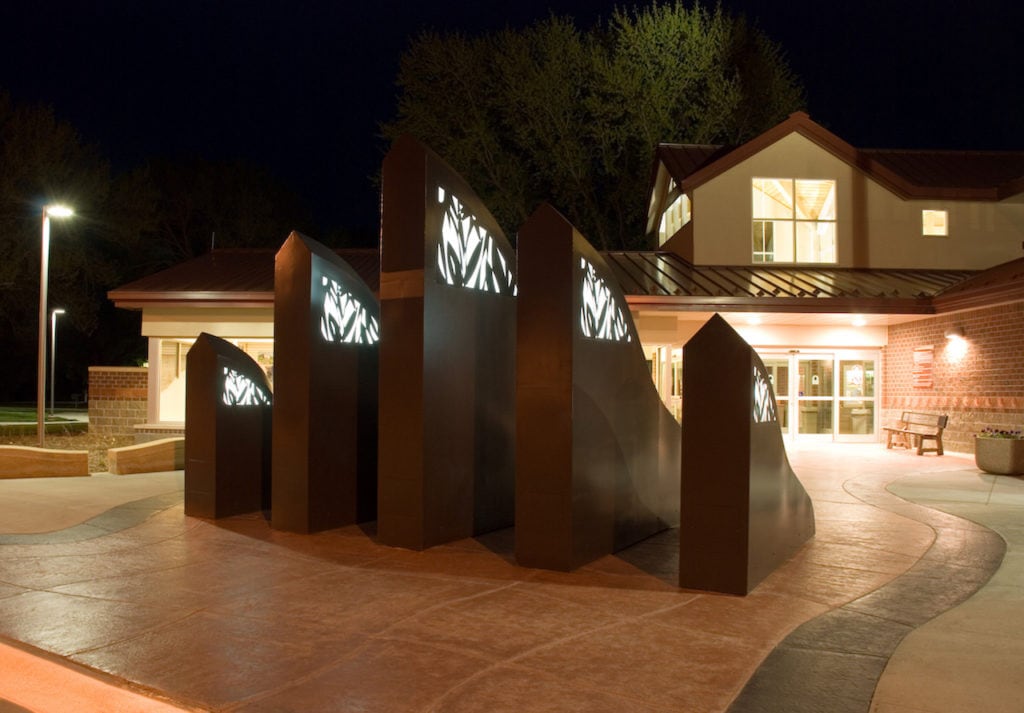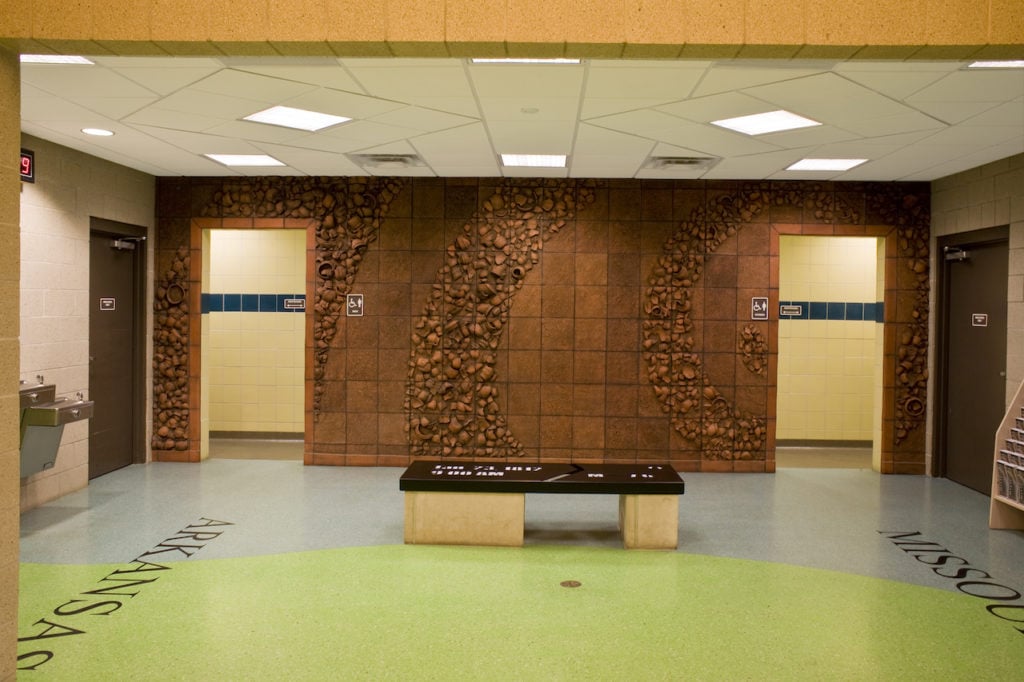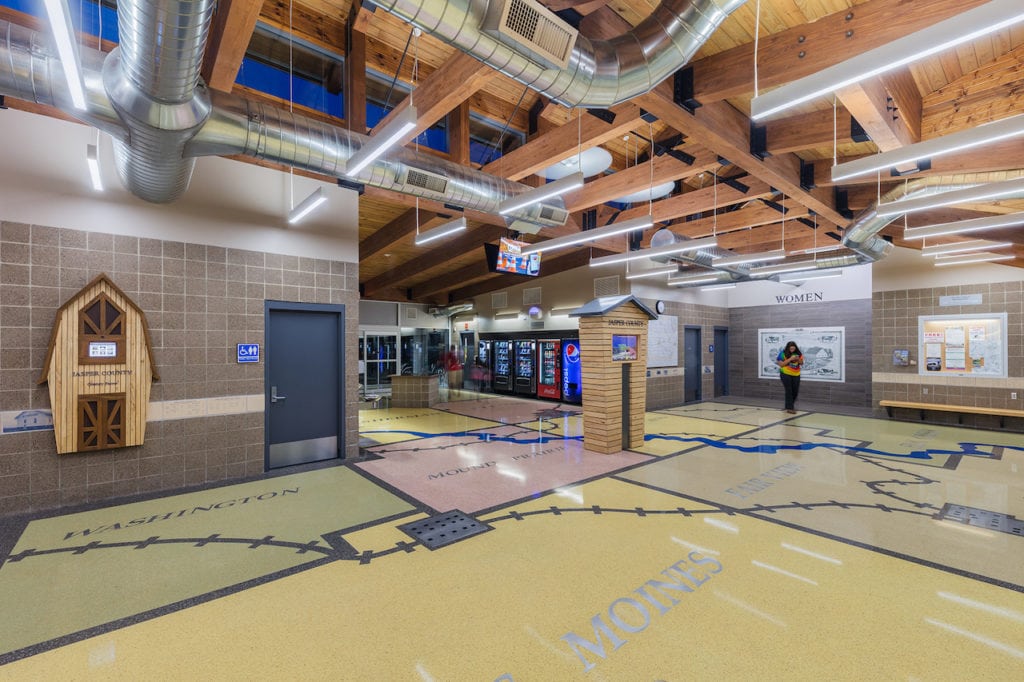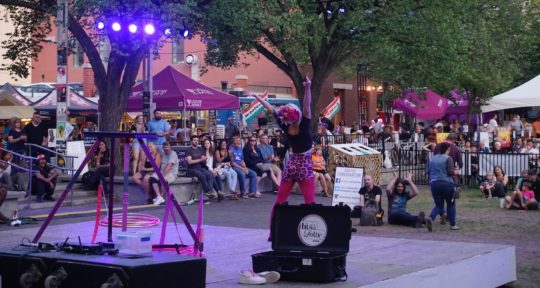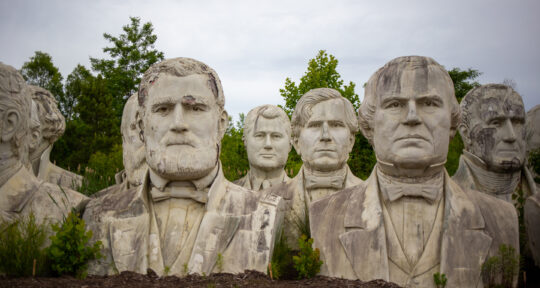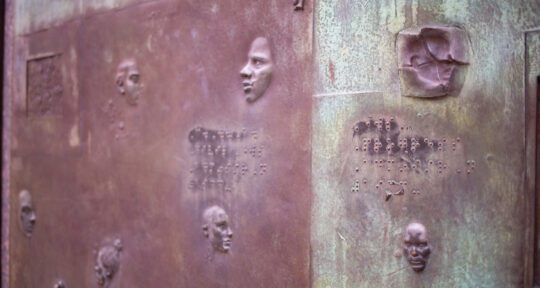Have you ever had a creepy experience that turned out to be a revelation of sorts? I have. My husband and I were roadtripping along Interstate 80 through Iowa when Mother Nature called. So, we zipped into the next rest area and went inside. That’s when it happened.
As I hurried to the women’s restroom, I almost crashed into the scary, stern-faced woman from American Gothic. You know the famous painting by Grant Wood—the one with the harsh looking couple, the man in overalls brandishing a pitchfork, standing in front of a farmhouse. The prim woman next to him looks like she’s never smiled in her life. And here she was, giving me that evil sideways stare just outside a public toilet.
I looked around to make sure I was in the right place. Across the hall, the man with the pitchfork was waiting at the entrance to the men’s restroom. Well, I certainly wasn’t going in there.
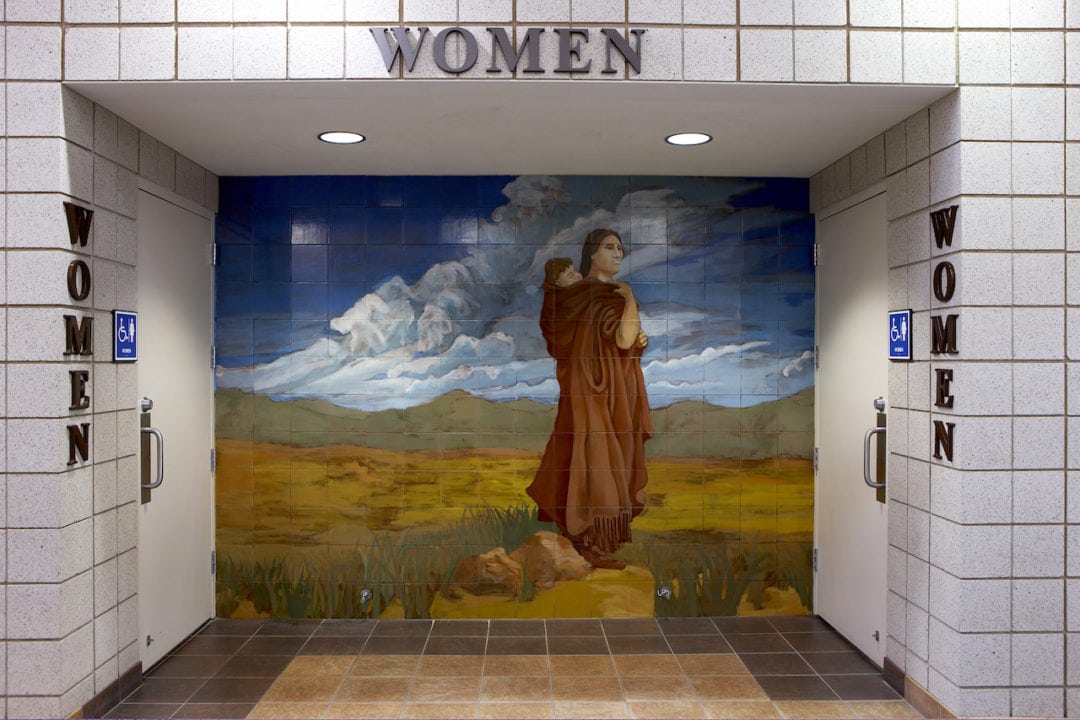
After taking care of business, my husband and I looked around, totally enamored by this unusual interstate rest area. Beautiful etched-glass, Gothic-style windows, fabricated hay bales to sit on, and colorful tiles depicting Iowa landscapes made this one of the most intriguing rest areas we had ever visited.
We were just outside of Cedar Rapids, Iowa, where artist Grant Wood lived and worked for much of his short life. In a studio nearby, he created the iconic American Gothic. One of the many ways Iowa celebrates this famous son is in a public restroom.
Don’t judge a state by its cornfields
The Grant Wood rest area is one of 19 rest areas in Iowa that immerse visitors in the local history and culture of the state. Nearly 17 million people stop at Iowa’s rest areas each year. For many, those few minutes may be the only interaction they will have with Iowa and its people.
“If you can get people to look at art on the way to or from a bathroom, then that’s our best first impression,” says David Dahlquist, an artist and principal in RDG Dahlquist Art Studio in Des Moines. The firm worked on 14 of the 19 immersive rest areas.
“I see it as reading a book,” Dahlquist says. “If you can get the public to open the book and read the first page, then they are yours.”
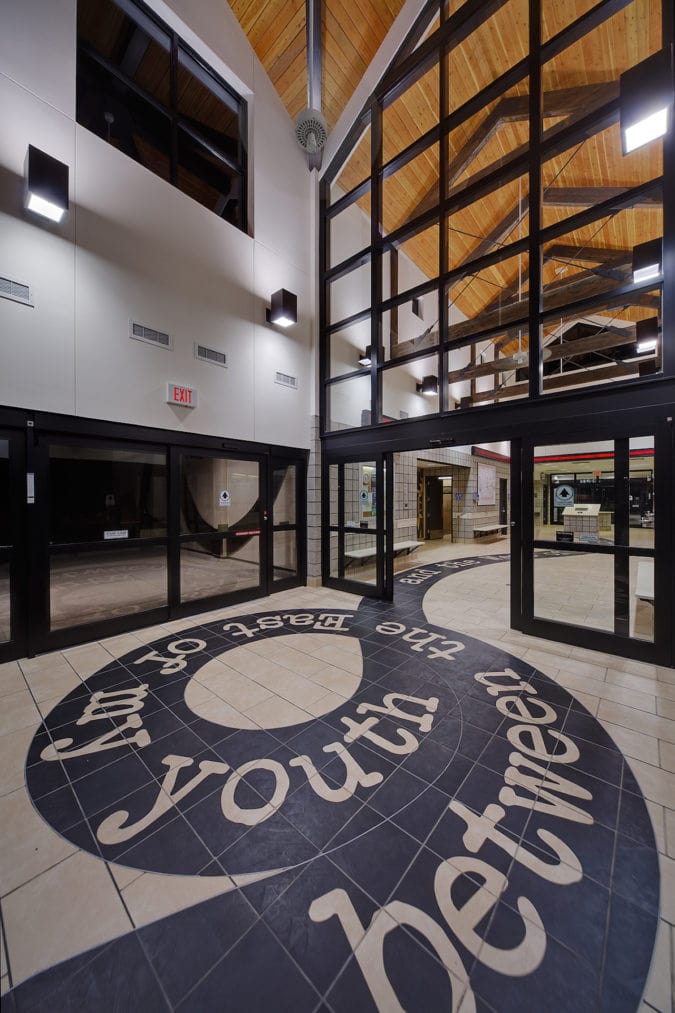
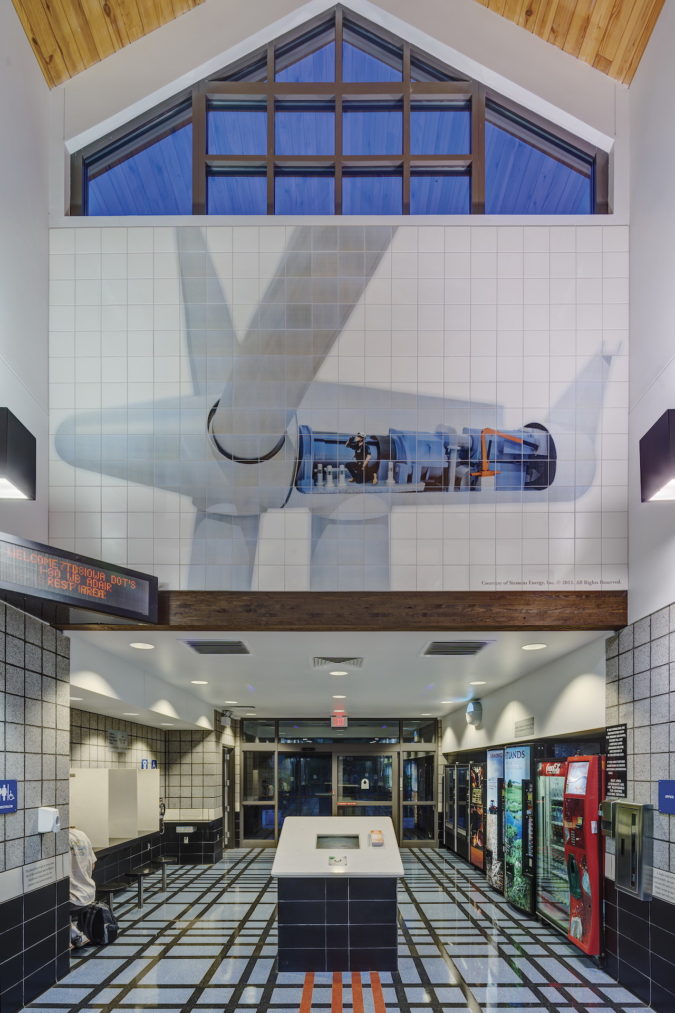
When the interstate highway system was developed nearly 60 years ago, rest areas were included as a safety consideration. When people get off the interstate for a few minutes to stretch their legs, get some fresh air, and use the facilities, they are more alert when they get back behind the wheel.
By the 1990s, many of those rest areas were in serious need of renovation, so Iowa’s Department of Transportation (iDOT) seized the opportunity to show the world what lies just beyond the interstates.
Sculptor Tom Stancliffe was chosen to create the art for the first rest area renovation in his home state.
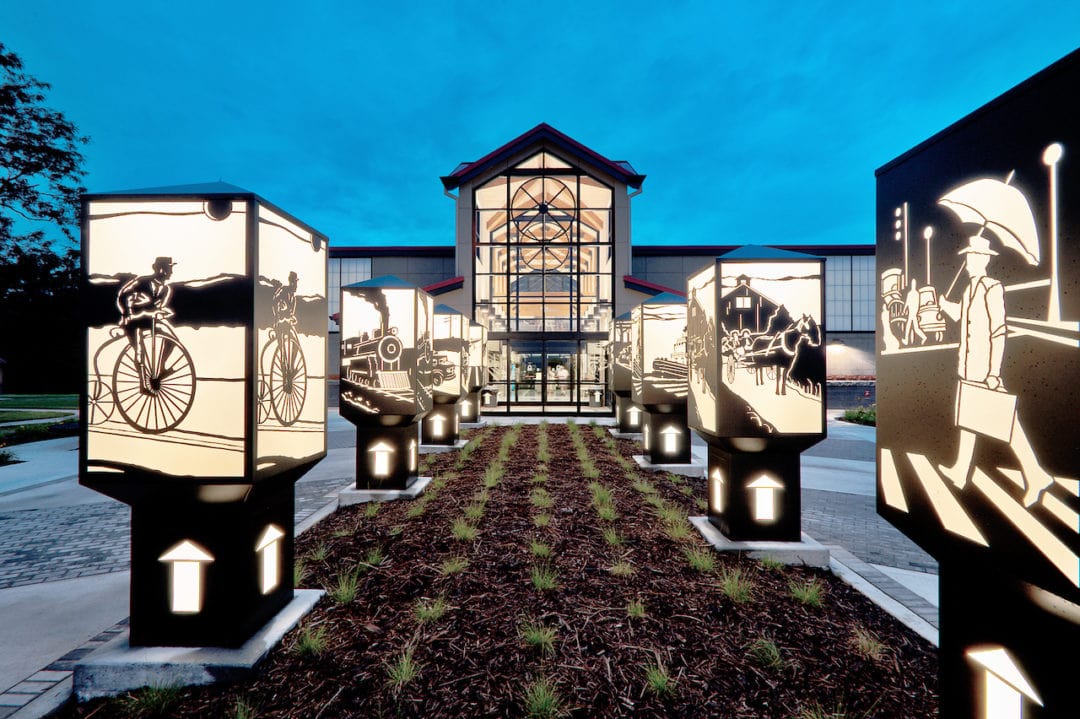
“I admit, there’s a lot of sameness to our landscape in Iowa, but I saw this as an opportunity to give us an identity beyond the practical Midwestern people that we are,” he says.
Located at mile marker 270 on eastbound I-80 near Wilton, Stancliffe’s rest area includes ten pillars that showcase Iowa’s resources. He chose themes that reflect agriculture, rivers, and prairies, but also incorporated education, ethnic cultures, and literacy—all elements that help Iowa grow.
“There’s never been a time I’ve been there that people aren’t interacting with it,” he says of the rest area. “It’s a constantly changing audience and really a pretty inexpensive way to reach a lot of people with a message.”
The rest is history
On the opposite side of I-80, the westbound rest area resembles a 19th century train depot. Train lanterns serve as light fixtures. A needle and thread weave their way through the brickwork around the building. Quilt patterns are embedded in the exterior concrete sidewalks and interior ceramic tiles on the floor and walls.
The ceiling includes a starry night sky with the North Star shining brightest. Even the picnic shelters outside include quilt patterns.
The theme is the Underground Railroad. This rest stop is in Cedar County, which, during the Civil War, offered 15 stops for runaway slaves heading north in search of freedom.

Another rest area with a historic theme is on I-29 on Iowa’s western side. I-29 follows the Missouri River, as did the Corps of Discovery in 1804, when Lewis and Clark began their journey to map the Louisiana Purchase.
Vibrant blue tiles in the floor wind through the building, replicating the flow of the Missouri River through the western half of the United States. Sacagawea with her infant son on her back highlights one wall. The names of all members of the Corps of Discovery are engraved in the building’s brick work. Weathered canoes serve as seating, indoors and out.
Charles Floyd, the only man to have died in the two-and-half-year expedition, is buried nearby.
Pottery lines the exterior of a rest stop, calling back to Iowa’s agricultural history. | Photo courtesy of RDG Dahlquist Studio To get inside, visitors must pass the storied walls of the rest areas. | Photo courtesy of RDG Dahlquist Studio Art lines the exteriors of the rest areas, pulling people inside. | Photo courtesy of RDG Dahlquist Studio
“I loved doing the research for this one, learning how the Missouri River has changed course over the years, the challenges of the unknown for the Lewis and Clark team,” Dahlquist says. “When you’re dealing with history of this magnitude, it becomes a challenge to condense it into a visual form, but the purpose is to pique the curiosity of our visitors, to make them want to learn more.”
Other rest areas in Iowa feature technology, transportation, and education. Thanks to the level of research and thoroughness of the artists involved, school teachers and homeschoolers regularly plan field trips to the rest areas to discuss the subjects depicted at each of them.
The leading edge
“A number of states now incorporate some public art in their rest areas, but Iowa was certainly the leading edge,” says Steve McMenamin, who has been with iDOT since the beginning of the project. “We believe our designs are more immersive and in-depth than anything else you’ll see on the road.”
Each renovation requires demolishing the original building and basically starting from scratch to accommodate innovations in lighting, plumbing, and HVAC. Picnic areas and the surrounding landscape often receive a serious makeover to include hiking trails, off-leash dog parks, and playgrounds. The upgraded rest areas all offer free Wi-Fi.
Some rest areas have interactive features. | Photo courtesy of RDG Dahlquist Studio Even the restrooms are beautifully decorated. | Photo courtesy of RDG Dahlquist Studio At its core, the project is about telling the story of Iowa—past, present, and future. | Photo courtesy of RDG Dahlquist Studio
The total cost for each rest area renovation is about $2 million. iDOT budgets for one rest area each fiscal year. Unfortunately, as budgets have tightened in recent years, some of the bigger scale artwork has been eliminated from renovation plans.
“Sure, that money might be spent on other infrastructure needs, but for the millions of people who stop at Iowa’s rest areas each year, they are a pleasant, educational, and memorable opportunity to experience the history and diversity of Iowa,” says McMenamin.
In other words, and to paraphrase a popular toilet paper commercial, “We all have to go, so we might as well enjoy the go.”
